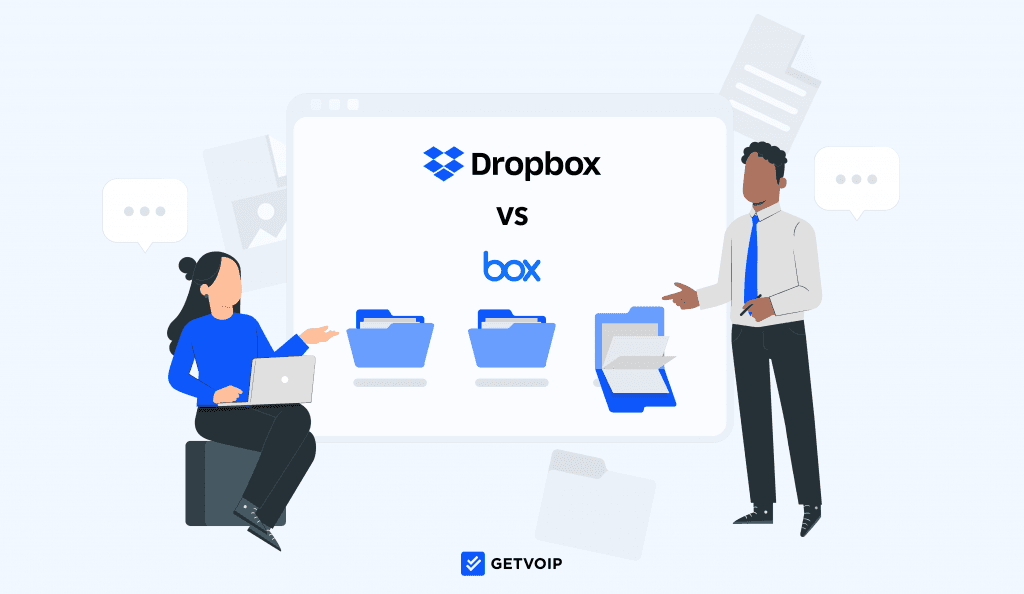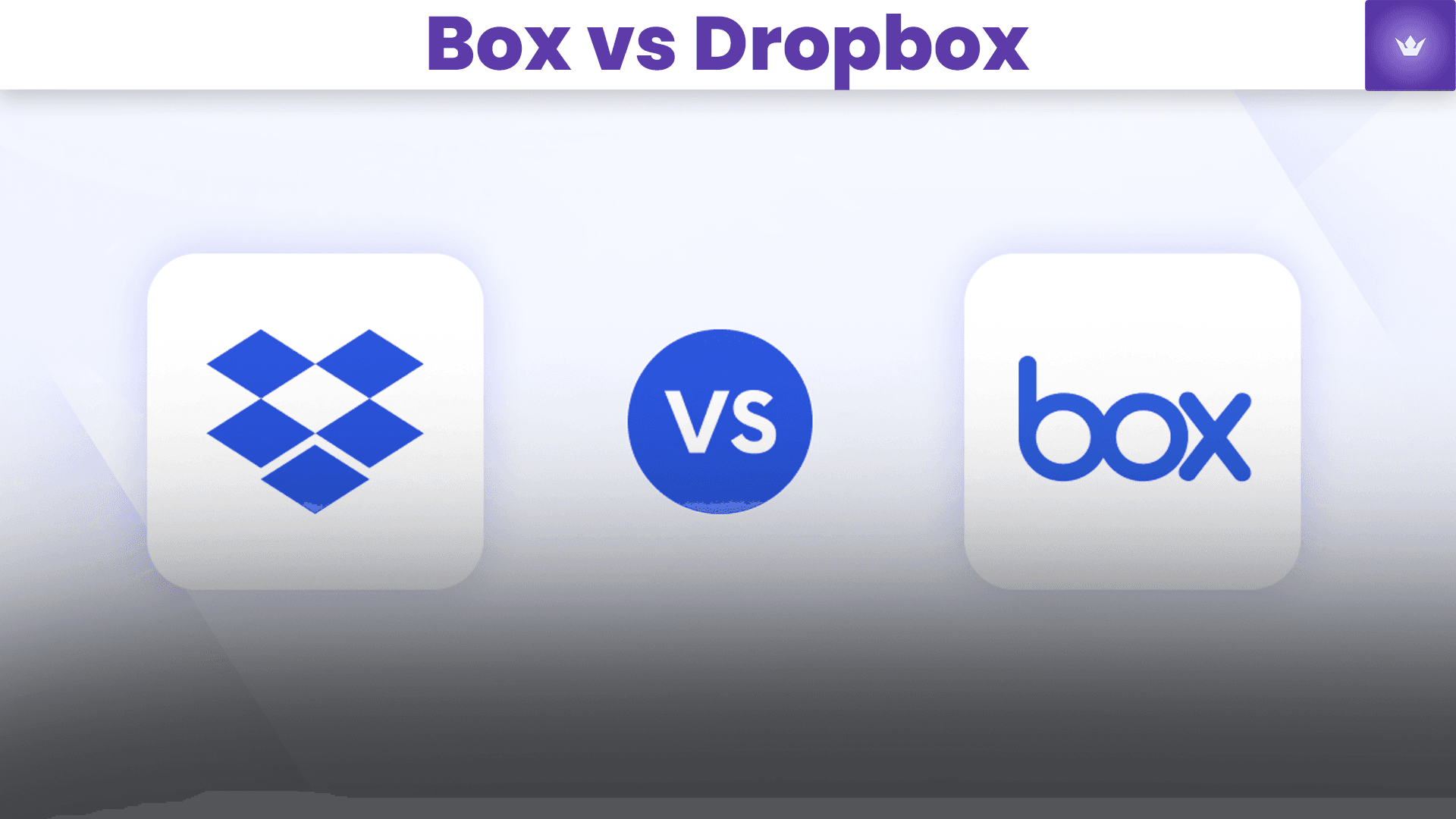Whether you’re a freelancer, entrepreneur, student, or member of an enterprise, cloud storage solutions have become essential tools for productivity, collaboration, and convenience. Today, in 2025, the competition between cloud storage platforms has intensified, and choosing between two giants—Box and Dropbox—can be tricky.
Let’s take a comprehensive dive into Box vs Dropbox. We'll explore key features, security measures, cost-efficiency, ease of use, integrations, and more. By the end of this guide, you'll confidently choose the solution perfect for your needs.
Table of Contents
- Box vs Dropbox: Overview of the Platforms
- Box vs Dropbox: Storage Features and Functionalities
- Box vs Dropbox: Security and Data Privacy
- Box vs Dropbox: Pricing Plans and Value for Money
- Box vs Dropbox: Integration and Compatibility
- Box vs Dropbox: Customer Support and Community
- Final Verdict: Box vs Dropbox – Which One Should You Choose in 2025?
Box vs Dropbox: Overview of the Platforms
Brief History and Evolution
Dropbox, founded in 2007, first gained popularity by offering simple file syncing features. Today, Dropbox boasts millions of customers globally and has transitioned to a complete solution for collaboration and team productivity. Its functionalities now range beyond storage to include team communication and project management.
Box began its journey in 2005, initially targeting enterprises and businesses. Box differentiates itself from Dropbox with a strong emphasis on compliance, security, and comprehensive control options. The platform today stands out among professional users and larger teams due to its robust security infrastructure and compliance readiness.
User Demographics and Market Positioning
Box primarily caters to large enterprises, businesses, educational institutions, and professional teams. Its rigorous security standards and high compliance attract businesses in highly regulated industries including finance, government, and health services.
Dropbox, on the other hand, has extensive adoption among individual users, freelancers, small-to-medium-sized businesses (SMBs), creative professionals, and startups looking for ease of use and user-friendly collaborative functionality.

Box vs Dropbox: Storage Features and Functionalities
Ease of Use and User Interface
Dropbox's interface has earned a reputation for simplicity, offering new users immediate comfort when using the software. Drag-and-drop file sharing, intuitive folder systems, and pleasant visuals attract creative users and beginners alike.
Box adopts a more structured and professional interface, offering abundant control and permission settings which can initially look overwhelming. However, Box has worked significantly on its UX recently, making it more accessible for first-time users in 2025.
File Management and Synchronization
Dropbox has refined synchronization technology, known as incremental sync, where only modified parts of files sync, thus saving bandwidth and time. Dropbox offers selective sync features, allowing you to choose specific files or folders for sync.
Box also offers impeccable file synchronization, yet focuses heavily on advanced metadata and detailed search capabilities. Particularly in larger organizations dealing with thousands of documents, Box's metadata and advanced search functionalities stand out clearly for efficiency.
For a detailed guide on synchronizing your files with Dropbox, you can view this short and up-to-date YouTube tutorial by Technology for Teachers and Students here.
Collaboration and Sharing Capabilities
Both platforms excel at collaboration, yet with distinct advantages. Dropbox integrates more native collaborative tools, including Dropbox Paper, an integrated workspace similar to Google Docs. Additional commenting, collaborative workflows, and notifications improve teamwork and real-time projects.
Box differentiates through custom workflows, task management, and automation of common business processes. Box's integrations make workflows seamless, significantly benefiting corporate teams and workflow-intensive tasks.
Box vs Dropbox: Security and Data Privacy
Data Encryption Methods
Security is crucial today in 2025. Dropbox employs AES 256-bit encryption for data at rest and TLS for data in transit. The service also uses two-factor authentication (2FA), ensuring greater account protection.
Box similarly adheres to stringent security protocols, including AES 256-bit encryption and TLS. Box stands out due to advanced Data Loss Prevention (DLP) tools and better platform governance features, providing a significant advantage for sensitive enterprise-level projects.
Compliance and Regulation
Box shines greatly in regulatory compliance. It complies with numerous industry-specific certifications and standards such as GDPR, HIPAA, FedRAMP, and many others. The Box Trust Center showcases their robust compliance structure that appeals directly to regulated industries.
Dropbox serves fewer regulated industries but still remains GDPR compliant and holds reputable certifications like ISO 27001. However, Box certainly holds the edge here, especially in industries like Healthcare, Legal, and Financial services.

Box vs Dropbox: Pricing Plans and Value for Money
Dropbox Pricing
Dropbox offers three tiers primarily targeted toward individuals, freelancers, SMBs, and smaller teams:
- Free plan: 2 GB storage
- Dropbox Plus (Individual): $11.99/month with 2TB storage
- Dropbox Family (up to 6 users): $19.99/month, 2TB shared storage
- Dropbox Business: starting at $18 per user/month.
Box Pricing
Box provides plans targeted mainly at SMBs, enterprises, and organizations:
- Free Plan: 10GB limit and 250MB upload limit per file
- Starter Plan: $5/user/month (up to 100 GB/ 2GB per file upload)
- Business: $15/user/month (unlimited storage and file collaboration)
- Enterprise plans: Pricing varies based on needs like advanced compliance and security customizations
Box vs Dropbox: Integration and Compatibility
Third-Party Integrations
Dropbox integrates effortlessly with tools like Microsoft Office 365, Adobe Creative Cloud, Slack, and Google Workspace. An impressive catalog of third-party apps supports creativity and efficiency.
Box provides vast integration capabilities aimed toward business processes and enterprise systems, including Salesforce, Google Workspace, Office 365, Slack, Oracle Netsuite, and custom app-building APIs.
Mobile and Cross-platform Availability
Both Dropbox and Box offer seamless, secure mobile apps available on Android and iOS platforms. Desktop apps are also available across major operating systems—Windows, macOS, and Linux.

Box vs Dropbox: Customer Support and Community
Help and Learning Resources
Dropbox provides a comprehensive knowledge base, video tutorials, and assistance via email and chat support.
Box offers more extensive personalized support, training resources, webinars, and tailored consultations available with the enterprise plan.
Community and Social Proof
Dropbox enjoys strong independent user communities like Dropbox Community, where customers regularly help each other.
Box also maintains an engaged community, though it's mostly enterprise controllers and IT administrators sharing technical best practices and advice.
Final Verdict: Box vs Dropbox – Which One Should You Choose in 2025?
In 2025, Dropbox best suits freelancers, creative industries, SMBs, or smaller teams looking for easy-to-use, intuitive collaborative tools.
Box is the ideal choice if strong security, enterprise-grade compliance, sophisticated integrations, and scalable business workflows represent priorities for your business or larger teams.
With deeper insights now at your fingertips, you can confidently make an informed decision between Box vs Dropbox in 2025.


